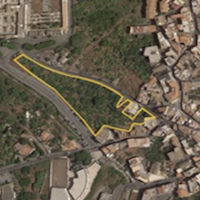Bee diversity in fragmented areas of Volcano Etna (Sicily, Italy) at different degrees of anthropic disturbance (Hymenoptera: Apoidea, Anthophila)

Published: 11 January 2022
Abstract Views: 2361
PDF: 882
APPENDIX: 590
HTML: 84
APPENDIX: 590
HTML: 84
Publisher's note
All claims expressed in this article are solely those of the authors and do not necessarily represent those of their affiliated organizations, or those of the publisher, the editors and the reviewers. Any product that may be evaluated in this article or claim that may be made by its manufacturer is not guaranteed or endorsed by the publisher.
All claims expressed in this article are solely those of the authors and do not necessarily represent those of their affiliated organizations, or those of the publisher, the editors and the reviewers. Any product that may be evaluated in this article or claim that may be made by its manufacturer is not guaranteed or endorsed by the publisher.
Similar Articles
- Salvatore Bella, Roberto Catania, Pierluigi La Greca, Vittorio Nobile, Giuseppe Fabrizio Turrisi, Vera D'Urso, Ecological connectivity of bee communities in fragmented areas of Volcano Etna (Sicily, Italy) at different degrees of anthropogenic disturbance (Hymenoptera, Apoidea, Anthophila) , Journal of Entomological and Acarological Research: Vol. 55 No. 1 (2023)
You may also start an advanced similarity search for this article.

 https://doi.org/10.4081/jear.2021.10326
https://doi.org/10.4081/jear.2021.10326




